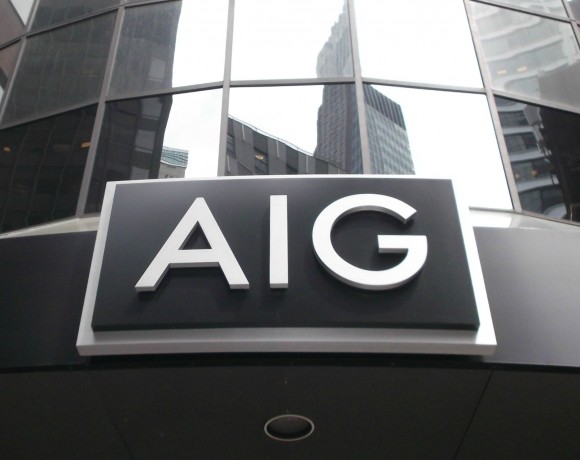AIG President and CEO Brian Duperreault said that the evolving, hardening market is sustainable and dovetailing nicely with the insurer’s ongoing efforts to shed excessively risky business.
He also announced that AIG will be investing in operational improvements with a goal of substantially reducing its expenses over the next few years.
“We are seeing strong rate improvement across most of our global portfolio,” Duperreault said during American International Group’s Q2 2019 earnings call on Aug. 8. “In addition to industry dynamics, rate increases reflect our comprehensive and disciplined strategy to reposition our business as market leaders, by refining our risk appetite…tightening terms and conditions and reducing capacity in certain areas.”
Duperreault said he saw rate increases accelerating in the 2019 second quarter, “in some cases materially.” He framed the hardening market as having more positive elements than in previous cycles.
“I would describe this market as one where there is more underwriting discipline and rigor around the deployment of capacity rather than a major decline in capacity,” Duperreault said. “That discipline seems to be playing out through the pricing models and underwriting processes that are recognizing increased loss costs, frequency … and other emerging risks.”
Duperreault added that the nature of the current hardening market means “the turn is based on facts, rather than emotion and is therefore more sustainable.”
“The market is reacting in a natural way, a way that one would expect a well managed industry to do,” Duperreault said. “I am encouraged by it.”
Duperreault’s comments echo recent statements from carrier CEOs such as Chubb’s Evan Greenberg and Berkley President and CEO W. Robert Berkley Jr., who in April was among the first to publicly express a belief the market was showing signs of hardening.
Plan of Operations
Duperreault revealed that AIG is embarking on a companywide program, headed by Peter Zaffino, chief executive officer, General Insurance, and global chief operating officer, to improve its core processes and infrastructure and lower its expense ratio substantially by the end of 2021. The project has been dubbed AIG 200, a name referring to the second 100 years for the company.
He said AIG has many excellent areas but has not invested in operational excellence. “We’ve got legacy processes, too many manual interventions on and on and on and it is a drag on our performance if you look at the GI [General Insurance] expense ratio in particular,” he said.
Duperreault said that expense ratio is “at least 500 basis points too high in my mind” and asked, “How are you ever going to get that down?” His answer: “We have to transform the company.”
Zaffino described AIG 200 as an effort to “modernize and digitize” workflows, “as well as create a more unified AIG.”
Zaffino discussed the company’s focus on adding talent to its property/casualty —General Insurance —operations. He said General Insurance strengthened its underwriting leadership team in the second quarter, added new talent to its reinsurance organization, expanded its operational capabilities that link to the rest of the organization, and overall, continue to build its bench.
Similarly, in personal lines, the company added a new leader for its high net worth business as it continues to refine the strategy for that business.
Zaffino cited excess and surplus lines unit Lexington Insurance, which he said has undergone “extensive repositioning with revised risk appetite and distribution strategy that has resulted in vastly improved submission flow and tighter limits.” The result has meant strong rate improvement in the mid-to-high teens in property/casualty.
In Financial Lines, AIG has been reducing its gross limits for lead layers while assuring that rates are strong and ahead of rising loss costs. For example, in primary corporate D&O, AIG saw a rate increase of above 30% with the policy count retention of approximately 90%. In parallel, it has been reducing primary commercial D&O aggregate limits by approximately 30% and primary commercial D&O policies with limits greater than $10 million in lead layers by over 45%.
He said Validus Re had a very good quarter. The main areas of focus were the April 1 Japan renewals and June 1 Florida renewals. “Demand was generally flat but capacity tightened due to a combination of factors such as prior hurricane loss development and reduced capacity from the ILS and retrocessional markets resulting in rate increases,” he said.
Source: AIG
Topics Pricing Trends AIG
Was this article valuable?
Here are more articles you may enjoy.



 Freight Broker Says $400K in Lobster Meat Stolen in Fictitious Pickup
Freight Broker Says $400K in Lobster Meat Stolen in Fictitious Pickup  Howden Buys M&A Insurance Broker Atlantic Group in US Expansion
Howden Buys M&A Insurance Broker Atlantic Group in US Expansion  2 New Jersey Pilots Killed in Helicopter Collision Frequented Nearby Cafe Together
2 New Jersey Pilots Killed in Helicopter Collision Frequented Nearby Cafe Together  CRC Group Signs Agreement to Acquire Euclid Transactional
CRC Group Signs Agreement to Acquire Euclid Transactional 

